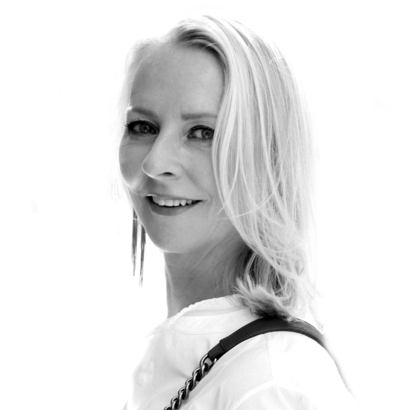To be crowned the best skin-care product of all time is a coup, especially for a product devoid of any formal arrangement with people named Jennifer or Kardashian. Especially if that product isn’t funded by Forerunner with a hefty ad budget and a fleet of influencers, their faces as tight and shiny as Mylar balloons.
A mere child at only three years old in 2021, Augustinus Bader the Cream and the Rich Cream beat Crème de la Mer and Estée Lauder Advanced Night Repair (in second and third place, respectively) in a vote of beauty-industry experts (me included) conducted by Women’s Wear Daily’s Beauty Inc.
Nothing about its origin story would lead anyone to predict the success of this hard-to-pronounce product with the difficult-to-grasp science. Is it “Aw-GOOS-ton-ees”? “AW-gus-ton-us”? “Aw-guz-TEEN-us”? “BAY-der”? “BAH-der”? Take your pick. Does it contain growth factors? Stem cells? No and no.
The formula springs from the mind of a soft-spoken, heavily accented, press-shy regenerative-medicine scientist, physician, and professor from Leipzig, Germany. Yes, Leipzig, skin-care capital of the world. (No, it isn’t.) Its magic ingredient, other than its proprietary complex, called TFC8, is Don Johnson.
Yes, that Don Johnson, of the Miami Vice Don Johnsons. The Nash Bridges, Django Unchained, Knives Out Don Johnsons.
This is the unlikely story of a face cream that changed rich women’s skin around the globe.
In 2008, Professor Augustinus Bader was working in his Leipzig lab on a hydrogel that, when absorbed, would send signals to the body’s own stem cells to spring into action and heal severe wounds. When a friend called him, distraught that his four-year-old daughter had suffered second- and third-degree burns on her feet, Professor Bader urged her doctors to apply his gel to the open wound.
The girl would have faced skin grafts, several operations, and likely disfigurement. And yet the gel healed the burn without leaving any scars. I’ve seen the pictures, and they’re astonishing. “Nobody believed me,” Professor Bader tells me over lunch. “They thought I changed the photos.”
When Charles Rosier, a Paris-based investor, heard about the technology, he thought, “Eureka!” No, he didn’t, because he’s a Frenchman living in this century. Mon Dieu! He pressed Professor Bader, asking, “Could you transform that burn cream into a wrinkle cream?”
Forgive him for using the regrettable, dated term “wrinkle cream.” The point is, both the investor and the scientist recognized that the damage, slackness, and sluggishness that plagues skin as it ages might well be relieved by a formula that marshals the body’s ability to heal itself.
Enter Don Johnson and Melanie Griffith, Johnson’s ex-wife. Griffith had a skin-cancer scar treated with Professor Bader’s gel and called Johnson, excited about this new, possibly breakthrough skin-care product, Johnson explains to me. “I get millions of those kinds of calls, not necessarily from Melanie, and I usually just blow them off,” he says.

Johnson and Griffith went to Germany to check out Professor Bader and his invention. While there, the paparazzi scoped them out, and tabloid reporters speculated that the two were in town to get his-and-her face-lifts. Or perhaps butt lifts. “That’s just what I want,” Johnson says. “A butt lift.”
Investing in a skin-care start-up was also not on Johnson’s vision board. “All one has to do is look at the skin-care market to say, ‘I want nowhere near this mess,’” he says. “I’ve seen actors doing fragrances and shampoos, and I think it looks hokey.”
“Linda, I’m not a futzy person. I’ve never had to be. I put on my face whatever’s there,” he says. “It’s just the energy of Dr. B. and the authenticity of the product that compelled me.... This is real, he’s real; this isn’t hype, this isn’t BS.” Johnson and Griffith promptly put the cream on their faces and their money in the company.
Johnson returned to Los Angeles ready to spread the word. And from there, it was like that old shampoo commercial where Heather Locklear and Wayne of Wayne’s World tell two friends, and they tell two friends, and so on and so on.
Johnson and Griffith handed out lab samples to Dakota Johnson, Gwyneth Paltrow, Charlize Theron, Mary Kate and Ashley Olsen, Kris Jenner, and a woman named Sat Hari Khalsa, a holistic healer and jewelry designer who may or may not be dating Brad Pitt (source: Us Weekly).
Khalsa did not return my requests for an interview, so I’m going on Charles Rosier’s word that she visits her clients to administer healing and vitamin drips every two or three weeks. “That’s the amount of time you need to use the product and notice a difference,” says Rosier. “She became a walking advertisement to the Hollywood community.”
By launch time, in February 2018, people were salivating for a bottle of Augustinus Bader the Cream and, later, the Rich Cream, at $265 for 50 milliliters. The price has since gone up to $280. The Rich Cream, indeed.
Its magic ingredient, other than its proprietary complex, called TFC8, is Don Johnson.
The creams hit the market just as the skin-care-buying public was growing weary of inflated claims, of products that smell like watermelon or contain a rare flower from the Himalayas, of singers and actors slapping their names on jars—all of them not much more than glorified moisturizers. It felt a bit hollow, opportunistic. A German regenerative-medicine expert who works on burn victims and has no media training whatsoever? Now we’re talking!
Upon hearing about the Augustinus Bader cream, many people compare it to another pricey cult cream, which first came to light in 1983. I was an editorial assistant at Vogue at the time when a man who described himself as a former aerospace scientist visited the beauty editors there. They were busy or uninterested or both, so Max Huber was stuck with me in the reception area.
There, he pulled out a jar of Crème de la Mer. To prove its purity, Huber dipped a finger in the jar and popped a bit in his mouth. I wasn’t sure that was necessary, but O.K. He took another blob and stuck it in his left eye, where it remained for the rest of our chat.
It will come as news to no one that Crème de la Mer became a sensation. At its inception, it was one of the most expensive moisturizers on the market, and among the most coveted. I remember Kevyn Aucoin, the legendary makeup artist, telling me about the time a big movie star visited him at home, saw his jar, and helped herself to a giant scoop, which she slathered all over her legs like cake frosting. Good-bye, $325!
Huber’s invention caught the attention of Leonard Lauder, and the Estée Lauder Companies bought the Crème de la Mer business in 1995, quickly transforming it into a multi-product behemoth.
Augustinus Bader may follow in those baby-soft footsteps. He is no longer an unknown, pink-faced, white-haired professor with a heavy accent. On a recent visit he made to New York, a woman in the lobby of his hotel rushed up to him to express her gratitude. “Nobody knows me in Germany,” he tells me. “Nobody’s interested.”
Meanwhile, Johnson’s investment is sound, his skin is impeccable, and all is right with the world. “Big hug, darlin’,” he tells me before hanging up.
Linda Wells spent 25 years as Allure magazine’s founding editor in chief, served as Revlon’s chief creative officer, and currently consults and sits on the boards of several beauty and apparel companies


